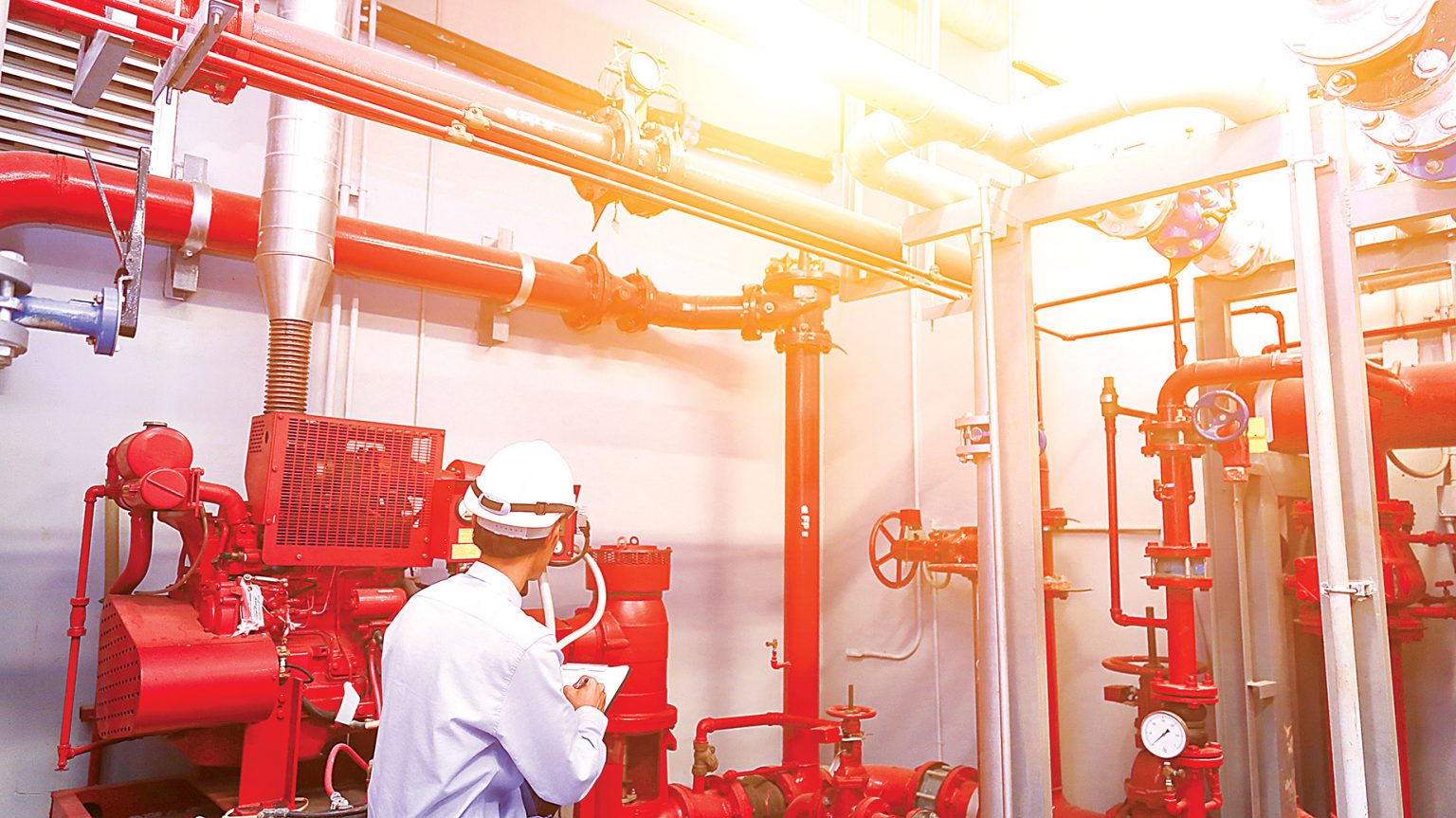Fire protection engineering interfaces with all the major disciplines on a building project. From an architectural standpoint, fire protection engineers concern themselves with how building layout affects firefighting access, egress characteristics, and other life safety features.
• From a structural standpoint, fire protection engineers concern themselves with the strength, thickness and fire resistance rating of building construction materials; the location of and protection of openings in fire walls or fire barriers; and the ability of a structure to support the weight of water-filled sprinkler piping. They also concern themselves with earthquake resistance.
• From a mechanical standpoint, fire protection engineers calculate the flow of water through sprinkler piping, the discharge of special extinguishing agents through nozzles, and flow of air and gases through smoke control systems.
• From an electrical standpoint, they address the wiring of fire alarm systems, detection systems, special extinguishing systems and fire pumps. They also address backup power supplies, emergency lighting, and electrical equipment for use in hazardous locations.
The Professional Society
Society of Fire Protection Engineers (SFPE) defines fire protection engineering as follows: Fire Protection Engineering is the application of science and engineering principles to protect people and their environment from destructive fire and includes:
1. Analysis of fire hazards;
2. Mitigation of fire damage by proper design, construction, arrangement, and use of buildings, materials, structures, industrial processes, and transportation systems;
3. Design, installation, and maintenance of fire detection, suppression and communication systems; and
4. Post-fire investigation and analysis.
SFPE also defines a Fire Protection Engineer:
• A Fire Protection Engineer (FPE) by education, training, and experience:
• is familiar with the nature and characteristics of fire and the associated products of combustion;
• Understands how fires originate, spread within and outside of buildings/structures, and can be detected, controlled, and extinguished; and
• Can anticipate the behavior of materials, apparatus, and processes as related to the protection of life and property from fire.


